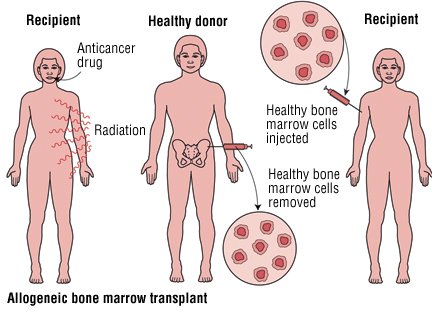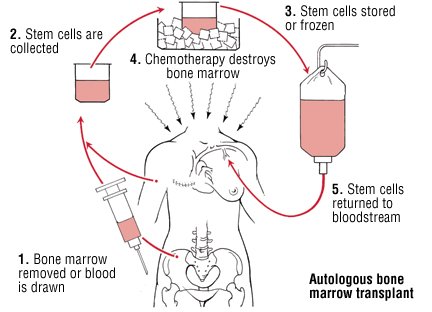The most common form of treatment is chemotherapy. Chemotherapy is a process that involves the introduction of cell-killing drugs to the patient. These drugs can be ingested orally in the form of pills and capsules or injected with a needle or a drip directly to the blood stream. They are designed to interrupt cell division, and thereby stop the spread of cancer. However, most drugs of this type are unable to distinguish between normal and cancerous cells. This explains why cancer patients often have damaged skin, and a loss of hair and nails (the cells for which are constantly multiplying). Other potential side-effects include, but are not limited to:
- damage to reproductive systems (testes and ovaries)
- abdominal pain
- anxiety
- weight gain
- fatigue
For these reasons, doctors advise chemo in cycles, to ensure the drug does more good than harm. Only by regulating and monitoring drug intake, can the patient remain healthy. A similar, though much more effective therapeutic alternative is targeted therapy. Drugs of this type block the division of cancerous cells, doing little or no harm to normal ones. It is a relatively new area, with a lot of potential.
Radiation offers another common practice for leukemia patients. Using high energy rays, a large particle accelerator machine blasts leukemia cells. By focusing on areas of large cancer build-up, the procedure aims to eliminate as many afflicted cells as possible. However, just like chemo, radiation treatment destroys healthy cells too.
Specialists often recommend accompanying radiation treatment with a bone marrow transplant. This relies on the function of healthy stem cells to replace those damaged by radiation or leukemia and takes on two forms. In the first, called an autologous transplant, the doctor collects and stores a sample of the patient's healthy bone marrow. Conversely, in allogeneic transplants, a non-leukemic individual donates some of their marrow. In both cases, the patient undergoes radiation therapy then has the healthy bone marrow, rich in blood stem cells, inserted into the body.
While all of these methods compose viable ways in which to control leukemia, cure is never guaranteed, particularly in chronic leukemia patients, in which the disease builds up over time. They can be strenuous on the body, but proper use of these techniques can improve life expectancy and in many cases allow the user to return to their normal lifestyles. However, arguably the biggest flaw with all of the above comes down to economics.



